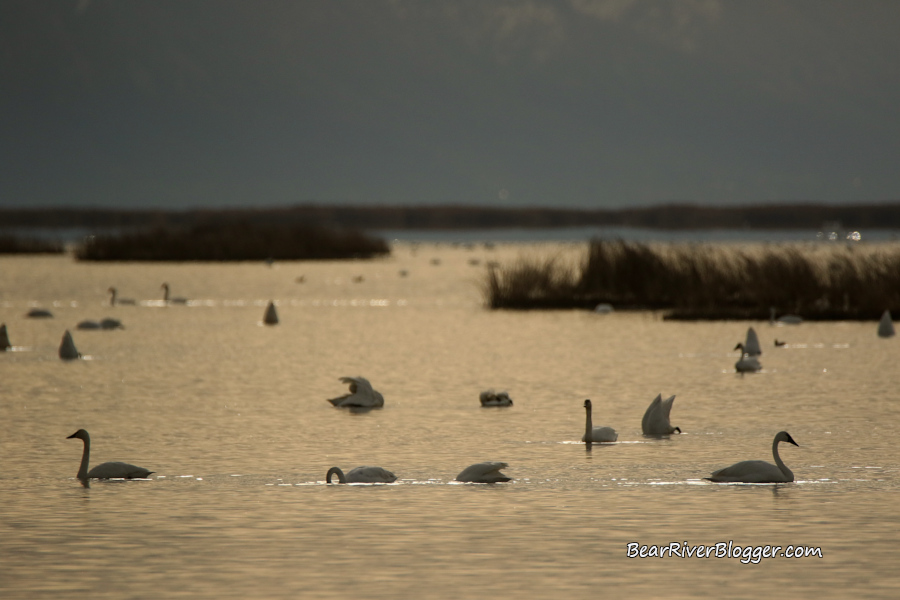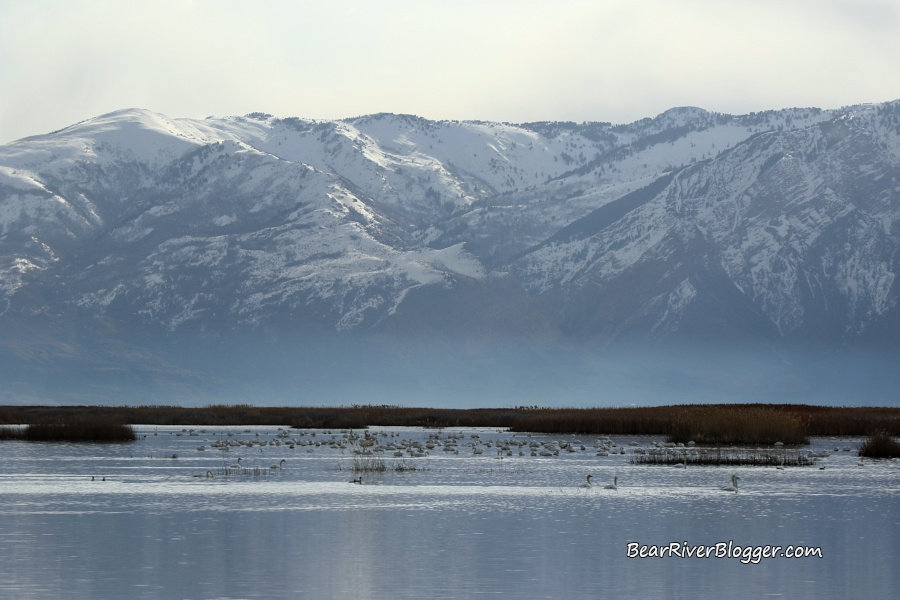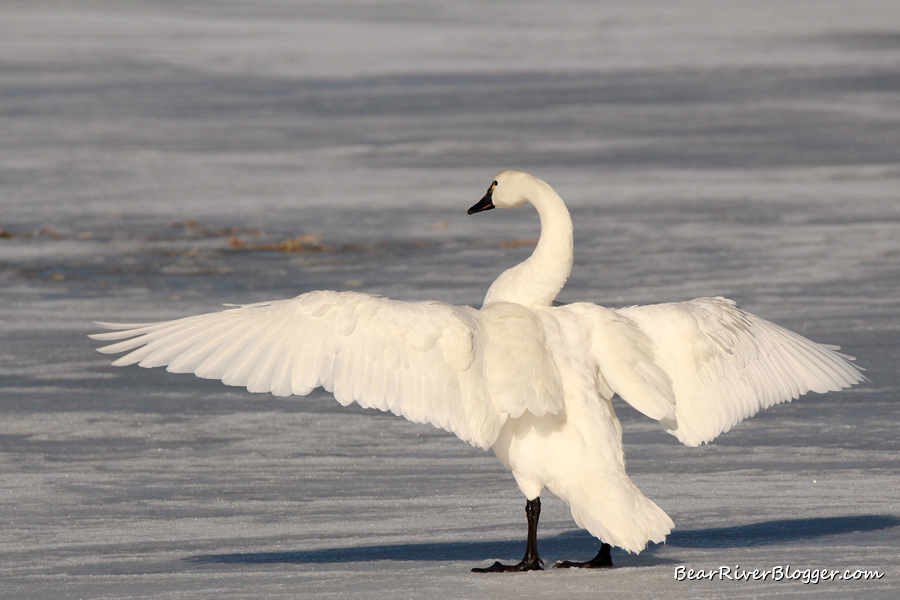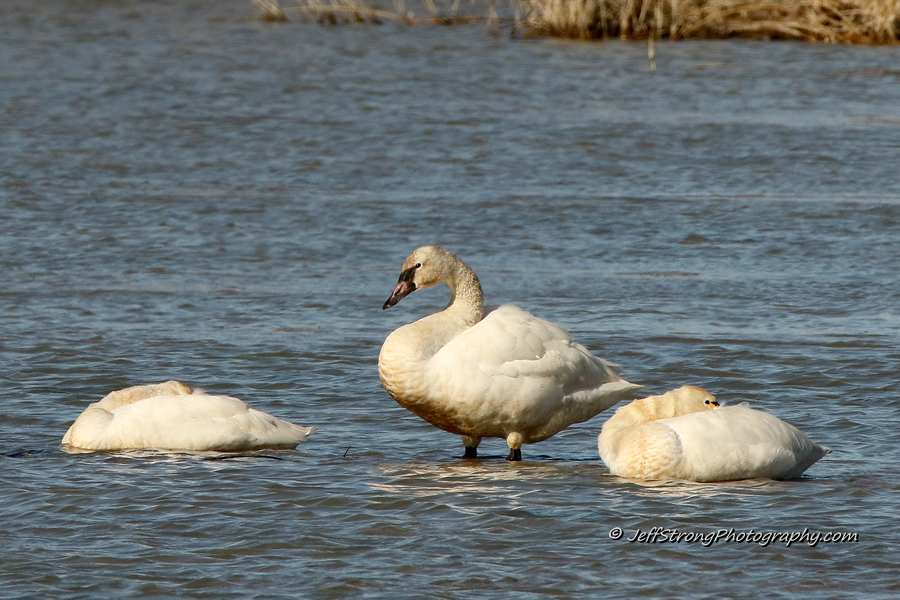Yesterday, the birdwatching bug was too much for me to ignore so, being one who is easily swayed to photograph birds when the opportunity presents itself, I opted to take a drive around the Bear River Migratory Bird Refuge auto tour route to see if the migrating tundra swans have made it to the bird refuge yet.
It’s not like I haven’t been viewing and photographing tundra swans all winter long, mind you, as I most certainly have, almost daily in fact with a few hundred or more stubborn swans declining to finish their migration to their winter home in northern California, instead opting to stay put on a frozen chunk of the northernmost wetlands of Great Salt Lake all winter long.
Suffice it to say, it seems that phenomenon has been a burgeoning trend over the past few years on the refuge, with a few hundred or more tundra swans cutting their fall migration short to spend the winter on the frozen wetlands of the Bear River Migratory Bird Refuge in Box Elder County, Utah for some unknown reason.
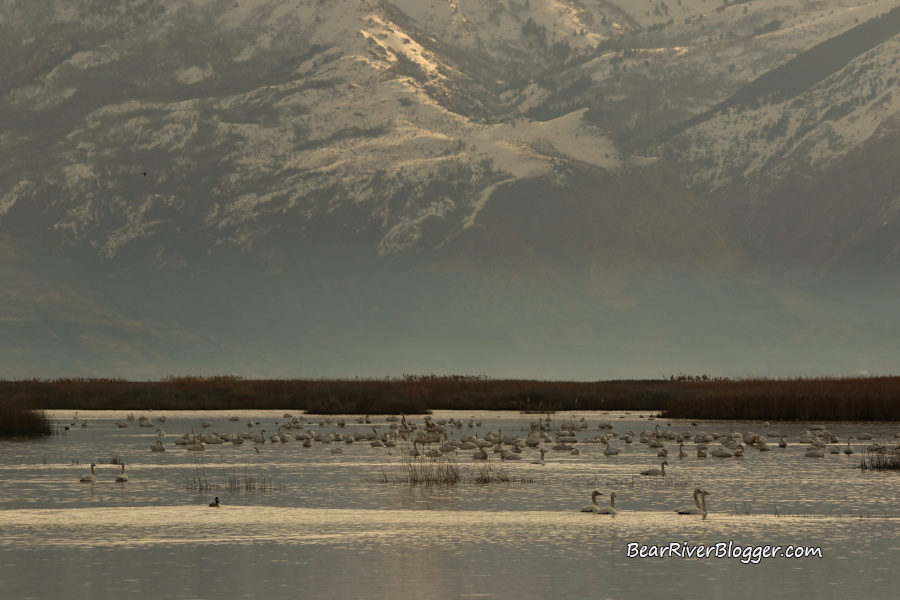
As an avid birdwatcher and nature photographer I can honestly say I am glad a few of the tundra swans do stay on the bird refuge all winter long but I just don’t know how they manage it as they need open water to access and feed on the submerged roots and aquatic vegetation that is under the ice and, unfortunately, out of their reach during the long, cold dreads of winter.
But from my most recent trip around the auto tour route I can safely say the very small flock of tundra swans that miraculously stayed all winter long has increased to, well, maybe thousands of swans now as a good number of these majestic birds have arrived to feed and rest on the Bear River Migratory Bird Refuge for a couple weeks or so before continuing their long journey north.
Tundra swans that migrate through Utah’s wetlands during spring are headed to the far northern areas of the Alaskan coastline to breed another family of swans for the year, birds that will once again migrate south through Utah’s bird refuge in November on their way to northern California for the winter season.
The tundra swan migration is a spectacle that happens twice per year, including both fall and spring migration, but keep in mind, however, due to the fall waterfowl hunting season on the refuge the absolute best time to view the migrating tundra swans is during their spring migration, typically around the first couple of weeks in March as their numbers quickly swell to many thousands of birds during this short period.
Tundra swans start showing up on the refuge in mid or late February when there is still ice covering the wetlands but that is about the time warmer temperatures start to thaw the frozen refuge waters and give unabated access to the aquatic vegetation the swans need to feed upon when they arrive.
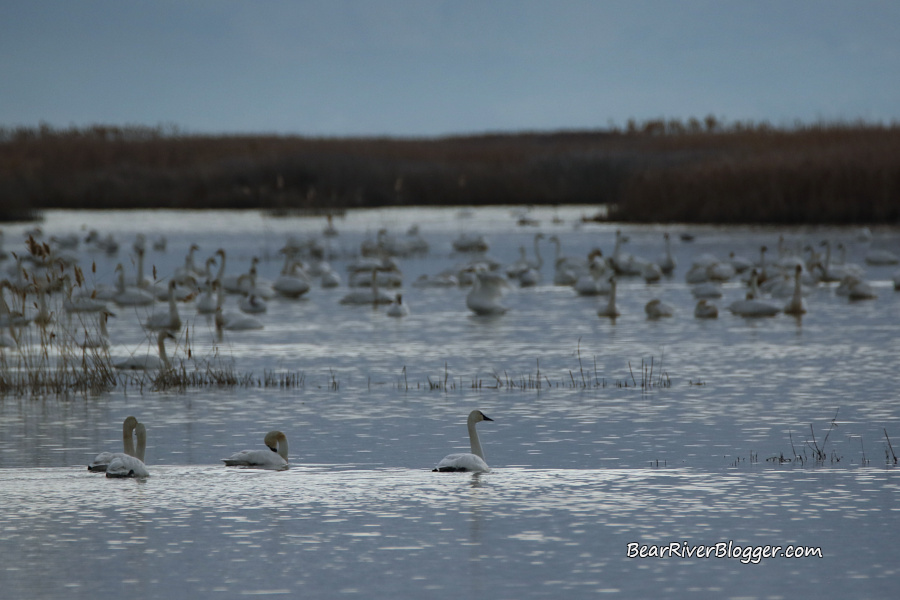
Without question, the best place to view and photograph the migrating tundra swans during spring is on the Bear River Migratory Bird Refuge auto tour route, a 12-mile self-guided gravel road that winds around a large portion of the refuge wetland habitat.
The auto loop is open year-round, from sunrise to sunset, and offers one of the best opportunities I have ever seen for birdwatching and photography, not just for tundra swans but for hundreds of bird species as well.
In fact, with regards to birding success on the refuge, eBird currently lists 261 species of birds being spotted and recorded on the auto tour route by other birdwatchers so there is plenty of potential for a great day of birdwatching on the auto loop when many of these birds return for the summer breeding season or, like the migrating tundra swans, are passing through the refuge on their way further north.
And from my own experience, it’s not just the spring and summer months that offer a great opportunity for both birdwatching and nature photography on the refuge but that can be had year-round as I almost always visit the Bear River Migratory Bird Refuge at least once, sometimes as many as fives times, per week throughout the entire year.
(Tundra Swans Feeding. For short nature photography tips like this one and interesting stories about the natural world around us, check out our Bear River Blogger channel on YouTube for videos and updates from our travels while out in nature, both on and off of the famed Bear River Migratory Bird Refuge.)
Different times of the year offer different species of birds and different photography opportunities but I have found there is always something to view, enjoy, and photograph on the refuge no matter the season.
That is what this website is largely about, in fact, so if you’re like me, an avid birdwatcher and nature photographer, I offer you to head on over to our subscribe page and sign up for email notifications for future blog posts about what we are seeing on and off of the famous Bear River Migratory Bird Refuge auto tour route.
